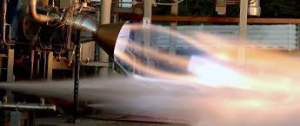A copper alloy additive manufacturing technology withstood a series of hot-fire tests on an advanced rocket engine Thrust Chamber Assembly (TCA) by NASA and Aerojet Rocketdyne, a GenCorp (NYSE: GY) company. The testing happened to be a first for the industry and happened to be successful. It all took place as a result of a cooperation between Aerojet Rocketdyne, NASA’s Space Technology Mission Directorate Game-Changing Development Program and NASA’s Glenn Research Center under a Space Act Agreement. There were a lot of components involved, and through innovation and collaboration, additive manufacturing proved resilient.
“This work represents another major milestone in the integrated development and certification of the materials characterization, manufacturing processes, analysis and design-tool technologies that are required to successfully implement Selective Laser Melting for critical rocket engine components,” said Jay Littles, director of Advanced Launch Programs at Aerojet Rocketdyne. “Aerojet Rocketdyne continues to expand the development of novel material and design solutions made possible through additive manufacturing, which will result in more efficient engines at lower costs. We are working a range of additive manufacturing implementation paths – from affordability and performance enhancement to legacy products such as the RL10 upper stage engine. We also are applying the technology to next-generation propulsion systems, including the Bantam Engine family, as well as our new large, high performance booster engine, the AR1.”

While Aerojet Rocketdyne is renowned for aerospace and military industrialization providing propulsion and energetics to the space, missile defense and strategic systems, tactical systems and armaments areas, in support of domestic and international markets, one thing is clear: their copper alloy can take the heat blast. GenCorp and Aerojet Rocketdyne continue to develop industrial additive manufacturing applications and they look to have immediate and long-term implications.


